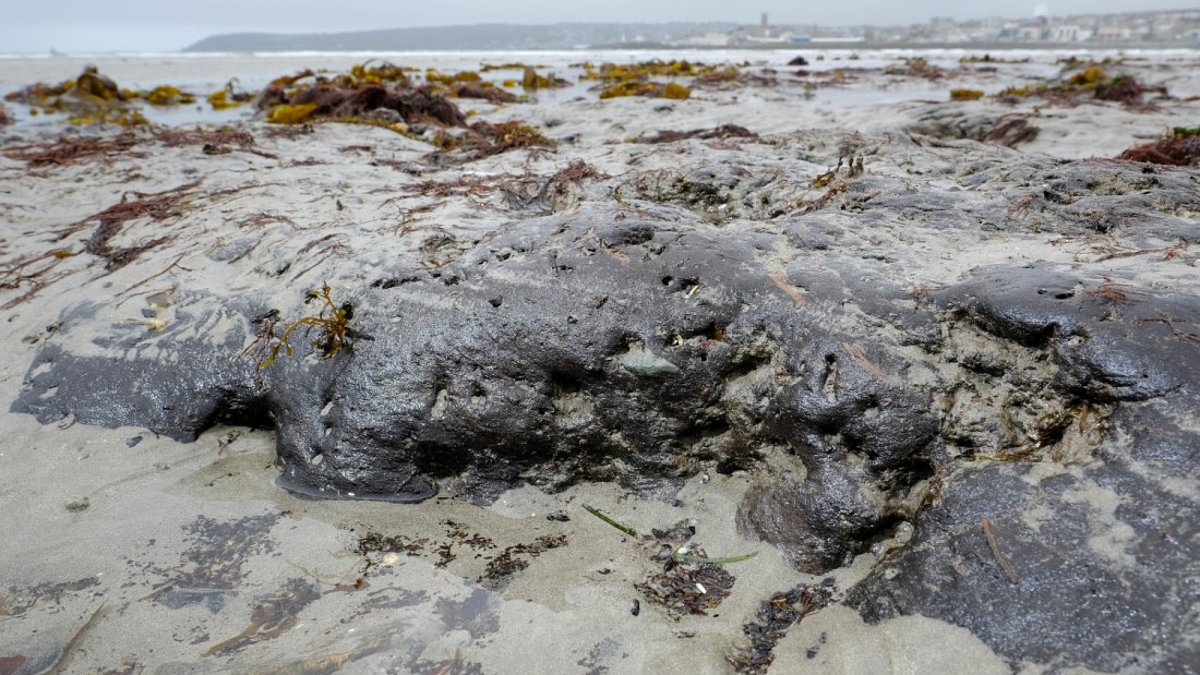A low tide on a Cornish beach has revealed the trunks, stumps and roots of an ancient forest that’s at least 4,000 years old.
Winter storms shifted sands in Mount’s Bay, meaning when the sea withdrew further than usual this week, it revealed the remnants of prehistoric trees.
The forest in Mount’s Bay has been known for centuries with St Michael’s Mount’s original name in Cornish being ‘Karrek Loos yn Koos’, meaning ‘Grey Rock in the Wood’.
But the peat beds that contain the remnants of the forest floor are only revealed every so often.

Tree trunks, stumps and roots from an ancient submerged forest in Mount’s Bay thought to be 4,000 to 6,000 years old

The ancient woodland was revealed following the lowest tide of the year
In January 2023, there were storms on the south coast which showed signs of the woodland and in March 2021 the ancient forest could be seen during the biggest tide of the year.
The last time a significant number of tree stumps and roots were uncovered at Chyandour Beach in Mount’s Bay, next to Penzance, was following the Valentine’s Day storm in 2014.
March 12 saw the lowest tide for this year when sea levels dropped to just 0.22 metres at Newlyn.
The Environment Agency issued flood warnings the same day, covering most of the coast of Cornwall.

The woodland is believed to also contain alder and hazel trees
The woodland is believed to also contain alder and hazel trees, and would once have existed far offshore when farming communities began to take shape across the UK.
It was claimed in 2014 that the forests show evidence of the changes Mount’s Bay has undergone as sea levels have risen since the end of the last glaciation.
Geologists have concluded that extensive forests extended across Mount’s Bay between 4,000 and 6,000 years ago.
According to Cornwall Geoconservation Group, there are a number of similar submerged forests around Cornwall that are occasionally revealed from under the sand.
These include beaches at Bude, Daymer Bay, Portreath and Pendower.
